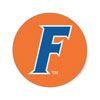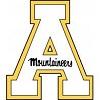
What are the top public graphic design schools of 2021?
| Ranking | School | State | Top % |
|---|---|---|---|
| 1 | North Carolina State University at Raleigh | North Carolina | 1% |
| 2 | Virginia Commonwealth University | Virginia | 1% |
| 3 | University of Texas at Austin | Texas | 1% |
| 4 | University of North Texas | Texas | 1% |
| 5 | University of Cincinnati | Ohio | 2% |
| 6 | Arizona State University | Arizona | 2% |
| 7 | University of California, Los Angeles | California | 3% |
| 8 | University of Illinois at Urbana-Champaign | Illinois | 3% |
| 9 | University of Washington | Washington | 3% |
| 10 | University of Illinois at Chicago | Illinois | 4% |
| 11 | University of Kansas | Kansas | 4% |
| 12 | Auburn University | Alabama | 4% |
| 13 | The Ohio State University | Ohio | 5% |
| 14 | Fashion Institute of Technology | New York | 5% |
| 15 | Massachusetts College of Art and Design | Massachusetts | 5% |
| 16 | San Diego State University | California | 6% |
| 17 | Michigan State University | Michigan | 6% |
| 18 | Portland State University | Oregon | 6% |
| 19 | Iowa State University | Iowa | 7% |
| 20 | Kent State University | Ohio | 7% |
| 21 | University of Houston | Texas | 7% |
| 22 | Texas State University, San Marcos | Texas | 8% |
| 23 | Pennsylvania State University | Pennsylvania | 8% |
| 24 | University of Tennessee – Knoxville | Tennessee | 8% |
| 25 | University of Florida | Florida | 9% |
| 26 | Temple University | Pennsylvania | 9% |
| 27 | University of Minnesota | Minnesota | 9% |
| 28 | University of Georgia | Georgia | 10% |
| 29 | Purdue University | Indiana | 10% |
| 30 | Indiana University | Indiana | 10% |
| 31 | Texas A&M University-Commerce | Texas | 15% |
| 32 | Appalachian State University | North Carolina | 15% |
| 33 | University of Texas at Arlington | Texas | 15% |
| 34 | San Jose State University | California | 15% |
| 35 | Indiana University-Purdue University, Indianapolis | Indiana | 15% |
| 36 | California State University, Long Beach | California | 15% |
| 37 | Virginia Polytechnic Institute and State University | Virginia | 15% |
| 38 | Oregon State University | Oregon | 15% |
| 39 | University of Arkansas – Fayetteville | Arkansas | 15% |
| 40 | Louisiana State University | Louisiana | 15% |
| 41 | Oklahoma State University | Oklahoma | 15% |
| 42 | University of Arizona | Arizona | 15% |
| 43 | University of Utah | Utah | 15% |
| 44 | Clemson University | South Carolina | 15% |
| 45 | University of Wisconsin – Stout | Wisconsin | 15% |
| 46 | University of Central Florida | Florida | 15% |
| 47 | California State University, Los Angeles | California | 20% |
| 48 | California State University, Fullerton | California | 20% |
| 49 | Bowling Green State University | Ohio | 20% |
| 50 | Colorado State University | Colorado | 20% |
Our 2021 rankings of the Top 50 Public Graphic Design School Programs in the US. We considered over 300 public colleges with graphic design programs for this year's rankings. For an explanation of ranking criteria, click here.

North Carolina State University (NC State) began as a land-grant institution in 1887, with a focus on agriculture and research. Today, NC State is one of the nation’s largest schools, serving more than 36,000 students, enrolled in 300 degree programs in a wide range of disciplines. Programs are offered in 12 colleges and more than 60 academic departments.
The College of Design, Department of Art + Design, houses the Graphic Design program, which offers two degree paths—a Bachelor of Graphic Design (BGD) and a Master of Graphic Design (MGD). Both programs are NASAD (National Association of Schools of Art and Design) accredited and the MGD is one of the few graphic design graduate programs with STEM Classification (CIP).
Students in the undergraduate program “study comparative ideas about, and methods for, creating visual communication,” says the school. “Through project-based assignments, students acquire strong formal and conceptualization skills. They learn and practice graphic design strategies, such as mapping and diagramming, to understand design problems, audiences, contexts, and visualization techniques, including ideation and iteration, to explore and refine design possibilities and determine appropriateness.”
All undergraduate students have the opportunity to take an advanced studio in another College of Design discipline (a swing studio), study abroad for a semester or summer at the NC State Prague Institute, and gain professional experience through paid internships within leading firms, and/or participate in sponsored studios as part of the graphic design curriculum.
Graduate students have two options: two-year and three-year programs. In both, students will “closely examine the cultural and technological situatedness of graphic design and its products, and seek understanding of the people who use and interact with the things that graphic designers make.”
Students in all programs will explore and become proficient in a wide range of media — print, web, mobile, virtual reality, augmented reality, and embedded technology. Students will also practice visualization strategies such as mapping, diagramming, and storyboarding and develop strong formal and conceptualization skills through project-based assignments. They will also immerse in advanced studios that cover special topics such as accessible design, branding, and data visualization.

Established in 1838 as the medical department of Hampden-Sydney College, Virginia Commonwealth University (VCU) is a public research university that serves around 31,100 students enrolled in more than 200 programs in 13 schools and one college. The School of Arts (VCUarts) houses 16 departments and programs offering 18 bachelor’s and five master’s degrees. The Department of Graphic Design at VCUarts offers several programs for aspiring graphic designers. Options include a BFA in Graphic Design, and an MFA in Design with a Concentration in Visual Communications.
Students in the BFA program will learn about publication and print design, sequential and motion design, and interaction design. After completing the Art Foundation Program, students will advance to hands-on Studio and Seminar courses in sequential order that will move them through the 122 credit hour curriculum. Course highlights for the program include Book Arts, Design Methods and Processes, Design Technology, Imaging, Interaction, Letterpress, Studio Management, and Visual Narrative.
Students in the MFA program “concentrate on the philosophical, communicative, and aesthetic relationships of visual problem solving and the interacting skills leading to the effective articulation of concepts,” says the school. Graduates will have the skills and knowledge needed to pursue a career in Design Education and/or further their professional practices in conducting visual or theoretical research, and in investigating the intersections of function and expression in design problem solving.
Another option for aspiring Graphic Designers is the Communication Arts BFA (CA BFA). Offered in the Communication Arts Department, the CA BFA is a flexible program that allows students to study 3D Modeling, Advanced Figure Drawing, Concept Design and Entertainment Design (such as video games and visual effects), Scientific Illustration, and Sequential Imaging (such as comic books and storyboards). “The program is centered on a rigorous investigation of studio methods and practices which explore conceptual and theoretical concerns for understanding and creating image, media, content and context.”
The focus during the junior and senior years is typography along with advanced coursework in everything from illustration to digital drawing. The senior year of the program culminates with the capstone portfolio course and a variety of electives are offered each semester to provide students the opportunity for specialized study.
Both BFA options prepare students to create effective visual communications for the advertising industry, business, entertainment, marketing, public relations, publishing, retail, and more.

Founded in 1881, the University of Texas at Austin (UT Austin) opened its doors in 1883 with one building, eight professors, one proctor, and 221 students. Today, UT Austin is home to nearly 52,000 students enrolled in over 500 degree programs and fields of study in 18 colleges and schools. The College of Fine Arts, School of Design and Creative Technologies has several programs for aspiring graphic designers including BA, BFA, and MFA degrees in Design. In addition, the Center for Professional Education offers an online Graphic Design Certificate that consists of 13 sessions over 13 weeks.
BA and BFA Design students develop their research, problem-solving and critical thinking/making skills through studio-based courses, while elective courses and the university’s core curriculum emphasize the liberal arts. In their junior year, students must complete at least one professional internship, which may include working at major companies with offices in the Austin area. Just a few include Apple, Dell, EA Games, Frog, Google, IBM, Pentagram, and Samsung.
The BFA is a pre-professional degree program encompassing typography, image creation/manipulation, interaction design and 3D design that is intended to prepare students for employment in the field of design. During the senior year, BFA Design students undertake a capstone design project and show their work in a public exhibition at the Visual Arts Center.
The Design BA is an “equally rich and rigorous exploration of design as a field,” says the school, “but is intended for students who prefer the flexibility and breadth of a liberal arts degree to the more studio-intensive, pre-professional BFA degree.” BA students enroll side-by-side with BFA students in rigorous introductory design studio courses. In the final two years of study, BA students take fewer upper-division studio courses.
The MFA in Design is a 60 credit hour program that accepts exceptional students with preexisting design skills. The program prepares students for “thought and organizational leadership in the field of design or in fields where design is being utilized strategically. In addition to advanced studio work in established design disciplines,” students have the “opportunity to study, explore and work in disciplines that intersect with design.”
All students in the program “will enjoy a formal curricular partnership with another discipline on campus and develop a thesis that thoughtfully intersects design with another field such as business, anthropology, engineering, or art.” In addition, the MFA Design program offers preparation for college teaching in the field of design through a series of classes exploring design pedagogy.
Design graduate students share studio space and have access to many other departmental and university resources, including The Computer Lab, The Design Lab, The Digital Fabrication Lab, The Wood Shop, The Visual Arts Center, The Harry Ransom Center, The Materials Lab, The Foundry, and the Fine Arts Library.

Founded in 1890 as Texas Normal College and Teachers’ Training Institute, University of North Texas (UNT) serves nearly 41,000 students making it one of the top five largest universities in Texas. The school offers 109 bachelors, 94 masters and 36 doctoral degree programs in 14 colleges and schools.
Considered one of the nation’s top art schools, UNT has been educating aspiring artists since 1894. The school’s College of Visual Arts and Design (CVAD) houses the Design Department, home to the Communication Design Program, which offers a BFA in Communication Design with a Concentration in Graphic Design.
Students begin the program “by learning to use the basic principles of design and design thinking, and progress to learn image making, color theory and typography as they create a wide variety of visual communications,” says the school. Course highlights include Advertising Copywriting, Cause-Based Design, Communication Design Studio, Foundations – Space, Foundations – Systems & Transformations, Graphic Design, Graphic Design Advanced Campaigns, Image Making & Color Theory, Interaction Design, Publication Design, and Typography.
Other program highlights include intensive studio courses and the opportunity to complete a professional internship.
Students who complete the Graphic Design Concentration will gain the ability to generate original, creative messages and ideas, and develop a professional portfolio to submit to potential employers. Graduates “are regularly recognized in national and international design competitions and have a high placement rate at top design, interactive and advertising firms throughout the country.”

Founded in 1819, the University of Cincinnati (UC) serves nearly 47,000 students enrolled in more than 400 academic programs across 14 colleges and a graduate school. UC is the global founder of cooperative education (co-op), so students also have access to some of the world’s best experience-based learning opportunities. UC co-op students “earn a collective $75 Million per year working in 22 countries and 44 states for more than 1,300 employers,” says the school.
The College of Design, Architecture, Art and Planning (DAAP) houses the Myron E. Ullman Jr. School of Design, which offers a BS in Communication Design (BSDES). The program, which takes five years to complete, offers three concentration areas including Graphic Design, Interaction Design, and Motion Design.
Students in the BS program will take a broad range of courses such as Design Ideation, Foundational Drawing and Design, Kinetic Communication, Photodesign, and Typography. Courses are supplemented with general education requirements, directed electives, design history, and interdisciplinary courses in design thinking and user-centered design. Studios “will refine and develop specific or general skills,” says the school “and be enhanced with further study in design history, methodology, research methods, and global studies.” Students in the program also reinforce their skills in the field through several co-ops.
Besides the BS in Communication Design, aspiring graphic designers might consider another program offered through UC’s Blue Ash College. The Art and Visual Communication (AVC) Department at Ash offers a two-year Associate of Applied Business (AAB) in Applied Graphic Communication. The program is designed for “students seeking foundational skills appropriate for further study in the design field or for employment in areas of design support.” Classes are small, so students receive considerable personal attention and direction from faculty. Though the program is a two-year degree, students may take up to three years to complete it.
Graduates of the Communication Design and Graphic Communication programs at UC have career opportunities in advertising, branding and corporate identity, digital product design, exhibit design, interface design, motion graphics and post-production design, package design, service design, user experience design, and web design.

Founded in 1885, Arizona State University (ASU) serves more than 110,000 students across five campuses and more than 45,000 on one additional campus. The Tempe campus serves more than 53,000 students, making it the largest campus in the ASU system and one of the largest in the U.S.
The ASU Herberger Institute for Design and the Arts houses the Design School, which offers programs in the areas of Architecture, Environmental Design, Industrial Design, Interior Design, Landscape Architecture, Urban Design and Visual Communication Design/VCD (Graphic Design). Visual Communication Design (VCD) options include a Bachelor of Science in Design (BSD in Graphic Design), a Master of Science in Design (MSD) with a Concentration in Visual Communication Design (VCD MSD), and a Master of Visual Communication Design (MVCD).
The BSD “curriculum develops a strong foundation of design principles through lower-division studio and lecture courses, using this to build an overall understanding of how design can shape perception and meaning using visual media,” says the school. “Upper-division studio courses provide opportunities for students to work in collaborative teams addressing professional projects in information design, interaction design, exhibition design, animation, motion graphics, branding, publication design, web design, interface design and the multiple contemporary facets of sensorial design.”
The MSD for individuals interested in “advanced studies in visual language, history, theory, criticism and methodology, design processes and technology.” The degree “develops an understanding of contemporary graphic design issues through specialized research and design skills. It also prepares the graduate student for a career in graphic design education.” Course highlights for the program include Contemporary Issues (Seminar), Methods in Visual Communication, Qualitative Research and Design, and Visiting Designers.
In addition to an internship in teaching design, a major component of the MSD program curriculum is the Travel Studio. Completed in the fall semester of the final year, students have the opportunity to “travel all over the world” and “experience a foreign place or country for one week.” The trip is faculty led and the cost is inclusive within tuition fees.
The MVCD has two options—a two-year studio-based program and a three-plus program. The two-year studio program is designed for students with a degree in VCD or Graphic Design and a three-plus program (three years plus one summer) is designed to be a first professional degree for those students who do not have an undergraduate degree in VCD or Graphic Design. Course highlights for the programs include Advanced Exhibit Design, Advanced VCD Studio, Creative Environment and Collaborative Leadership, Dynamic Visual Representation, Information Design, Motion Graphics/Interaction Design, Principles for Collaboration in Design, Sustainable Visual Communication, and Technology for Design. Several internships are part of the program as well as Visiting Designers and the Travel Studio.

Founded in 1919 as the Southern Branch of the University of California, University of California Los Angeles (UCLA) is considered one of the leading arts and cultural centers in the western United States. The school, which hosts more than 1,000 visual and performing arts events each year attracting more than 500,000 patrons, serves nearly 45,000 students enrolled more than 125 undergraduate majors in 109 academic departments, and master’s degrees in over 80 academic and professional fields.
Programs for aspiring graphic designers are offered in School of Arts and Architecture, Department of Design Media Arts (DMA). Options include BA and MA degrees in Design Media Arts. The BA in DMA program “emphasizes innovative creation with digital and mass media within the context of a public research university,” says the school. The curriculum highlights “a solid foundation in form, color, space, motion, typography, and interactivity, followed by a broad selection of area studies courses in video, visual communication, network media, game design, and narrative.”
Course highlights include 3D Modeling and Motion, Drawing and Color, Network Media, Special Topics in Interactivity and Games, Special Topics in Visual Communication and Image, Word + Image, and Video.
Other program highlights include courses taught as studios of no more than 22 students, the opportunity to take other electives from the university to broaden the experience, and a Senior Project “where each student defines their own” project “based on individual interests within the areas of interactivity and games, video and animation, and visual communication and image.”
The two-year MFA in DMA begins with skills and theory courses, then progresses to “thesis definition, exploration, and production, through a series of studio and seminar courses.” Highlights include Interactivity, Media Histories, Programming Media, and Special Topics in Media Arts: Contemporary Media Arts. Sixteen units of electives is required, providing an opportunity for students to select courses outside the department.
Students in the program will take several Graduate Seminar Courses and they have the opportunity to work as teaching assistants and to collaborate with faculty members on research projects.

University of Illinois at Urbana – Champaign (UIUC) was established in 1867 as Illinois Industrial University. The school is one of the original 37 public land-grant institutions created after President Abraham Lincoln signed the Morrill Act. UIUC serves nearly 52,400 students enrolled in 150 undergraduate and more than 100 graduate and professional programs. Programs are offered across 16 “academic units,” including the College of Fine and Applied Arts, which houses the School of Art and Design—home to the Graphic Design Program.
Degree options include a BFA and MFA in Graphic Design. The 122 credit hour undergraduate program prepares students for entrance into the professional practice of design visual communications. “studio work addresses graphic design fundamentals (typography and image making), design history and contemporary practices, research methods, user experience, and social responsibility,” says the school. In addition, “students have the opportunity to develop their personal interests by taking advantage of a highly interdisciplinary selection of elective courses offered by the School of Art + Design. Highlights include Sustainability, Video, and the design of Ninth Letter, “a nationally-distributed and award-winning literary arts journal.”
Just a few required courses include Advanced Interaction Design, Ethics of a Designer in a Global Economy, Expressive Drawing, Graphic Design Toolbox, Image Practice, Time Arts, Typographic Systems, and Visualization Drawing. Students in this program will also have the opportunity to complete an internship.
The 64 credit hour MFA prepares students to “contribute to the field of design by entering into practice, academia or both.” Students in the program have the opportunity to “explore responsible futures through research in traditional print media and emergent technologies including, but not limited to, data visualization, digital interaction, information design, systems thinking, and visual narrative.”
Other program highlights include the opportunity to take courses at Siebel Center for Design, collaboration with PhD students in Informatics, who specialize in design, and networking through “world-class” programs across campus. Students will also develop partnerships at the Research Park—a leading technology hub that cultivates start-ups and accelerates corporate innovation at companies such as Abbott Laboratories, ADM, Ameren, Capital One, and State Farm.

Established in 1861, University of Washington (UW) serves more than 54,000 students at campuses in Seattle, Tacoma, and Bothell. The UW’s 18 colleges and schools offer more than 570 degree options across 300+ programs, with more than 1,800 undergraduate courses alone each quarter. Each year, UW Bothell confers more than 12,000 bachelors, masters, doctoral, and professional degrees.
The school’s College of Arts & Sciences houses the School of Art + Art History + Design (SoA+AH+D), which offers a Bachelor of Design (BDes) in Visual Communication Design and a Master of Design (MDes). One of the largest undergraduate programs at the University of Washington, Visual Communication Design is a professional program “primarily aimed at visual communication in the corporate, institutional and municipal sectors,” says the school.
Students in the programs engage in all phases of typography, information design, design systems, exhibition design, publication design, new media, and visual methods/processes. Course highlights for the BDes include Corporate Identity, Exhibition Design, Information Design, Interface Design, Marks + Symbols, Publication Design, and Visual Systems. A Design Capstone is also part of the program as well the opportunity to complete an internship.
The two-year MDes is a terminal degree “for designers who wish to deepen their practice by engaging in advanced research and scholarship, or who are interested in pursuing academic careers.” The program “stresses interdisciplinary work and research-driven design practice.” MDes students have taken courses and participated in research projects with the Business School, the College of Engineering, the Department of Biomedical Informatics, the Department of Communication, the Department of Psychology and the School of Nursing. Theses have addressed topics such as topics as aviation, healthcare, information visualization, and urban planning.
Students in both programs will have the opportunity to compete for more than 100 seats in the SoA+AH+D study abroad program to explore art, art history, and design in an international context. Past students have studied in Japan, Rome, Spain, and Tuscany.

University of Illinois at Chicago (UIC) was formed in 1982 by two U. of I. campuses—the Medical Center campus, which dates back to the 19th century, and the comprehensive Chicago Circle campus which, in 1965, replaced the two-year undergraduate Navy Pier campus that opened in 1946 to educate returning veterans. Today, with more than 33,500 students enrolled, UIC is the largest university in the Chicago area.
UIC offers 260 degree programs and 66 certificate programs across 15 colleges. This includes the College of Architecture, Design, and the Arts (CADA), which houses the School of Art and Art History, Department of Art—home to the Graphic Design Program. Degree options include the Bachelor of Design (BDes) and Master of Design (MDes) in Graphic Design, and the MDes Prelim Program.
Offered to applicants who do not hold a bachelor’s degree in design, the Prelim Program is a customized yearlong program that prepares students for the two-year MDes.
The four-year BDes program highlights studio-based instruction, while the two-year MDes focuses on an independent master’s research project. In the BDES program, “emphasis is placed on perfecting hand skills and in developing proficiency with digital technology,” says the school. “Through exposure to design practice, design culture, and critical observation, students experience Chicago as a global design center.”
Course highlights for the BDes include Analyzing the Natural World, Digital Media Design: Interactivity, Form + Image Studio, Type: Experimentation, and Understanding the Individual in Society. Students will also complete a thesis.
The two-year MDes “is a globally oriented program delivered in Chicago and Basel, Switzerland.” Chicago-based students have the opportunity to participate in the Basel School of Design Summer Workshops. In both locations, students will focus on the independent master’s research project. The program culminates in a public exhibition of the project.

The University of Kansas (KU) opened in 1866 with just 55 students. Today, the school serves 28,500 students across five campuses in the Lawrence, Overland Park, Kansas City, Wichita, and Salina. More than 400 degree and certificate programs are offered in 13 schools, including the only schools of pharmacy and medicine in the state.
The School of Architecture and Design at KU houses the Department of Design, which offers a BFA in Visual Communication Design (Graphic Design). Students in the program “learn to combine communication and technology with design and business to create powerful visual solutions,” says the school. Course content “deals with a variety of visual communication design problems related to the community, society, industry, commerce, and advertising and attention is given to the development of a well-rounded, representative, and quality portfolio.”
Course highlights include Book Arts, Bookmaking, Designing for Change, Designing for Social Interactions, Digital Letterpress, Elements of Type, Environmental Graphics, Exhibition Design, Letterpress, Motion Graphics, Publication & Editorial, The Photobook, Typographic Systems, and Visual Communication. The program also offers internship and study abroad opportunities as well as the option to complete the Certificate in Book Arts.
The Certificate requires 12 credit hours, and students learn production across the “whole book—papermaking, typography, printing, and binding, informed by the history of the book.”
KU Visual Communication Design graduates work in a wide range of areas such as branding, corporate marketing communications, exhibition and environmental design, interface design, magazine and book design, motion graphic design, packaging design, traditional print media, and website design. Potential job titles include Advertising Art Director, Animator, and Art Director, Commercial/Industrial Designer, Exhibition Designer, Graphic Designer, Marketing Manager, Multimedia Specialist, Public Relations Manager, and many others.

Auburn University was established in 1856 as the East Alabama Male College. Today, the school serves a co-ed population of nearly 31,000 students enrolled in more than 140 degree options in 12 colleges and schools, plus the graduate school. The College of Architecture, Design, and Construction houses the School of Industrial and Graphic Design, which offers a BFA in Graphic Design (BFA GDES). This is Alabama’s only GDES Program to receive accreditation by the National Association of Schools of Art and Design (NASAD) accreditation.
Students in the program “follow a curriculum that provides variety and depth in all aspects of the field, supported by Fine Arts electives,” says the school. This includes branding, illustration, motion, packaging, publication, typography, UI/UX, and packaging, app, and wayfinding design.
In addition, “students have excellent opportunities for internship and cooperative education experiences as a result of well established relationships with regional, national and international companies and firms.” As a result of their overall experience and education, students will build a strong portfolio of work.
Graduates of the program are prepared to design positions with magazines and in logo and identity development, interactive media, exhibitions, illustration, environmental graphics, packaging, and web design.

The Ohio State University (OSU) was established in 1870 as Ohio Agricultural and Mechanical College. This land-, sea- and space-grant university houses more than 200 academic centers and institutes, where research, policy-making, knowledge creation and student engagement happen daily across many disciplines. Serving more than 68,000 students, the school offers over 200 majors, minors and specializations in 18 colleges and schools.
OSU’s College of Arts and Sciences houses the Department of Design. Established in 1968, the Department has an 18:1 student to instructor ratio and more than 3,000 Design alumni. Programs for aspiring designers include a Bachelor of Science in Design (BSD) in Visual Communication Design and a Design Thinking Minor.
Students in the BSD program use digital tools “including advanced computing technology, to visualize and present translations of complex data and ideas,” says the school. Students will “study and explore research-based approaches to the visual design of information, the development of brand identities based on present and future conditions, and the creation of way-finding systems for navigating complex environments.”
The production of printed materials such as books, brochures, packaging, and posters is also part of the program. Sample courses include Design Media 1 for Visual Communication Design, Typographic Design, Materials + Processes for Visual Communication Design, Design Research, Collaborative Design, Professional Practices, Sustainability and the Built Environment, and Design Matters. In their senior year, designers will complete a final project “that demonstrates each student's comprehensive knowledge and ability to work independently.”
The Design Thinking Minor is a 15 credit hour program that introduces students to new and creative ways to solve problems. Courses include Design Practice, Design History, Exploring Design Thinking, Visualization as Thinking, and Presentation as Thinking.
Graphic design students who would like to pursue graduate study at OSU have two options: the MFA in Visual Arts offered through the Department of Art and the MFA in Digital Animation and Interactive Media offered through the Department of Design. The MFA in Visual Arts offers emphases in seven studio areas: Art and Technology, Ceramics, Glass, Painting and Drawing, Photography, Printmaking, and Sculpture. The 66 credit hour, three-year program allows students to work across disciplines and with faculty from all seven studio areas.
The MFA in Digital Animation and Interactive Media allows students to select courses that cover visual design, technical skills for animation and interactive media, programming and algorithms, audio design, writing and scripting, and professional development. Students in all graduate art programs have 24/7 access to private and semi-private studio spaces as well as The Wexner Center for the Arts—a world-renowned contemporary art center located on campus; The Fine Arts and Cartoon Libraries; and the Urban Arts Space—an off-campus, OSU-run gallery in downtown Columbus. The Urban Arts Space is the location of the third-year thesis exhibitions.

Fashion Institute of Technology (FIT) opened in 1944 with just 100 students on the top two floors of the High School of Needles Trades. Today, as part of the State University of New York (SUNY) system, FIT spans an entire city block and serves more than 10,000 students enrolled in a variety of programs. Just a few include Cosmetics and Fragrance Marketing, and Menswear, which are unique to the college, and Fashion Business Management, Visual Presentation and Exhibition Design, and Toy Design, the first of their kind in the country.
Programs are offered in five academic divisions including the Schools of Art and Design, Liberal Arts, and Graduate Studies, Jay and Patty Baker School of Business and Technology, and the Center for Continuing and Professional Studies.
The School of Art and Design offers 17 programs that provide “a practical, hands-on, real world based education,” says the school. Programs for aspiring graphic designers include an AAS in Communication Design Foundation and a BFA in Graphic Design.
The Communication Design AAS “focuses on computer technology, typography, color theory, layout design, and conceptual problem solving. Students develop their own styles while studying design principles, theory, and communication skills.” Other program highlights include field trips to top design firms in New York City, guest lectures, and internship opportunities. Graduates of the program will be prepared for entry-level design positions or for further study in a related BFA program at FIT. Options include Advertising and Digital Design, Graphic Design, Packaging Design, and Visual Presentation and Exhibition Design.
The curriculum for the Graphic Design BFA includes “the study and design of products such as magazines, posters, websites, annual reports, books, and signage.” The program covers advanced typography, corporate identity systems, art history, and more. Besides versatile design skills “that can be applied to magazine and newspaper publishing, catalog production, and promotional publication design,” students will develop “critical thinking, research, analysis, and presentation skills.”
Other program highlights the opportunity to study with practicing professionals and to gain first-hand experience through internships at major institutions and design firms such as MoMA, Pentagram, the Art Directors Club, and many others. Students also have the opportunity to study abroad in England at Chelsea College of Art & Design, the London College of Communication, or Nottingham Trent University.
The Graphic Design BFA Program concludes with a senior thesis project and a juried design exhibition. Students will graduate with “a strong portfolio to present to potential employers.”

Massachusetts College of Art and Design (MassArt) began as Massachusetts Normal School in 1873. The development of the school was in response to the Massachusetts Drawing Act, which required all cities in the Commonwealth of over 10,000 residents to include drawing in their public school curricula.
Today, MassArt is known as “the Commonwealth’s art and design school,” and it serves 2,000 undergraduate, graduate, and continuing education students.
The school offers dozens of programs in areas such as Animation, Film and Video, Glass, Illustration, Industrial Design, Painting, Printmaking, and Sculpture. Programs lead to the BFA, MFA, MDES, MAT, or MArch. Options for aspiring graphic designers include a BFA in Communication Design and a Graphic Design Certificate (GDC).
Students in the GDC program “explore the formal elements of design including composition, color, texture, shape, typography, and imagery to master the art of communication design,” says the school. This 38 credit hour program is designed for working adults who are interested in advancing into a career in graphic design. Graduates will leave the certificate program with a portfolio of professional quality work.
The Communication Design BFA Program challenges students to “develop design solutions in the areas of package design, publication design, web and app design, interactive communication, and advertising, as well as the creation of graphic identities and brand systems.” Course highlights for the program include Advanced Web Projects, Community Partnership Design, and Disobedient Design: From Activist Posters to Augmented Reality, Experimental Book Arts, Identity Systems, Information Architecture, Language of Motion, Letterpress Printing, Poster Design, Programming for Designers, and Type Design.
Students in the program will have the opportunity to complete immersive options such as the Course Assistantship, Design Research, Independent Study, and an Internship.
Graduates of the Communications Design BFA and GDC work for ad agencies, design studios, in-house corporate design departments, and as freelance designers. Some graduates have gone on to launch their own independent start-ups and studios.

Serving 33,870 students and open since 1897, San Diego State University (SDSU) is the oldest and largest university in San Diego and the third largest in the state. With nearly 200 degree programs, SDSU houses seven colleges, including the College of Professional Studies and Fine Arts (PSFA), which has 10 core departments and schools, including the School of Art + Design. Here, aspiring designers can earn a BA (in Applied Arts and Sciences), MA or MFA with a Graphic Design Emphasis.
The Graphic Design program “is structured as a sequence of core studios in design fundamentals, typography, image-making, and history courses, that progressively introduce form and concept-development skills across a range of media,” says the school. Upper level students will have the opportunity to work with a wide range of clients, organizations, and communities through SDSU’s internship and Design Studio programs. They will solve “contemporary design problems” by applying the skills acquired during the first two years of the program.
During the final year of the program, students will build a professional portfolio that prepares them for entry-level positions in a variety of areas within graphic design.
Graduates hold titles such as Advertising Artist, Corporate Image Designer, Graphic Designer, Graphic Illustrator, Layout/Production Artist, Print Production Specialist, and Technical Illustrator, among others.

Founded in 1855, Michigan State University (MSU) serves nearly 50,000 students enrolled in more than 200 programs in 17 degree-granting colleges. The school, which sits on one of the biggest and greenest campuses in the nation, lists notable alumni such as NBA legend Magic Johnson, Michigan Governor Gretchen Whitmer, celebrated actor James Caan, and film director/producer/writer/actor Sam Raimi.
MSU’s College of Arts & Letters, Department of Art, Art History, and Design, offers a BFA and a 15 credit hour Minor in Graphic Design. An MFA that allows students to select a track such as Graphic Design is also available.
The BFA program offers the unique opportunity for students to gain real-world design experience by providing design services to the community. “MSU's Design Center in the Department of Art, Art History, and Design works with internal and external clients to effectively communicate the client's messages in a professional manner,” says the school. “From logos to packaging, and brochures to websites, Design Center has worked on a variety of projects, each specifically targeted to address the goal and personality of an individual client.”
Undergraduate students who “exemplify creativity, dedication, and professionalism in the Graphic Design Program” are selected to join the Design Center creative team each year.
Other program highlights include AIGA membership, internship opportunities, and the Annual Visiting Artist & Scholar Lecture Series. Past lecturers include Martin Venezky, Ben Fry, Jim Sherraden of Hatch Showprint, Stuart Bailey, Jan Wilker, Cheryl Towler Weese, Hans Allemann, Karen Cheng, Nancy Skolos & Tom Wedell, James Victore, Andrew Blauvelt.
MSU Graphic Design alumni are Art Directors, Creative Directors, Freelancers, Graphic Designers and Video Editors with advertising agencies, design firms, in-house design offices, production studios, publishing companies, and more.

Portland State University (PSU) opened its doors in the summer of 1946 to just 220 students. Today, the school serves nearly 24,000 students, making it the biggest art school in the Pacific Northwest.
PSU offers more than 200 degree programs in nine colleges and schools. The College of the Arts houses the schools of Architecture, Art + Design, Music, and Theater + Film. With around 1,400 students enrolled, the School of Art + Design offers BA, BS, BFA degrees and Minors in areas from Art History to Graphic Design.
PSU’s Graphic Design Program has options leading to the BFA and a Minor in Graphic Design (MAGD).
The Minor consists of 32 credit hours of study and start terms are flexible. Course highlights for the program include Communication Design Systems, Computer Graphics for Art & Design, Digital Imaging & Illustration, Narrative and Communication Design, and Typography.
The curriculum for the BFA consists of lower and upper division courses. Lower level courses “introduce students to principles of basic design and art and their specific applications in graphic design,” says the school. They also provide a comprehensive studio experience with an increased emphasis on design thinking.” Upper level courses “focus increasingly on areas of specialization, opportunities for engaging in professional internships, and work to develop a professional portfolio as the culmination of students’ design studies.”
Other program highlights include the option to add the Advertising Management Minor, the Show & Tell and Matthias Kemeny Endowed Design Lecture Series, participation in the Annual Student Showcase Be Honest, and the Graphic Design Senior Showcase known as Fresh. Students also have the opportunity to sign up for Summer Study Abroad experiences such as Art History in Rome, Berlin: The Fall and Rise of an Art City, or Mixed Media and Printmaking in Guanajuato, Mexico.

Founded in 1858, Iowa State University serves 31,825 students enrolled in more than 100 undergraduate majors and over 200 fields of study leading a graduate or professional degree. Programs are offered in eight colleges, two schools, and roughly 150 academic departments. The College of Design houses the Department of Graphic Design, which offers BFA and MFA degrees in Graphic Design, and an MA in Experiential Graphic Design (MAxDG).
The BFA in Graphic Design is a four-year degree consisting of one year in the College of Design Core Design Program, which allows students to experiment with interdisciplinary work at the earliest stages of their college education, make informed degree choices, and apply to multiple programs at the end of the first year. Students in the program will have the opportunity to complete the Junior year Graphic Design Practicum that provides real-world experience with clients such as Habitat for Humanity and the Special Olympics. In their Senior year, students will also complete a summer internship or study abroad experience in College of Design’s Rome Program or Graphic Design in Europe.
Other program highlights include travel experiences every semester to design centers across the country and option studios in a variety of graphic design applications. This includes 3D Animation, Branding and Logo Design, Exhibition Design, Motion Graphics, Multimedia, Narrative, Packaging, Publications, Typography, Wayfinding, and Web and E-commerce.
The Graphic Design MFA program consists of 64 credit hours of study. The terminal degree in the field, the MFA produces graduates who are “skilled in communication design and problem solving,” says the school, and “adept in the use of visual language, symbology, and interaction.” Program highlights include Graphic Design Field Study opportunities including study and tours of museums, galleries, artist and/or designer studios, and participation in the International Study Abroad Program in Western Europe, where students visit art museums, design studios, and educational facilities.
The MAxGD Program is designed for artists seeking a graphic design specialization with little or no previous experience in the area. This 30 credit hour program “focuses on preparing students for visual communication” and it “provides a comprehensive exposure to all aspects of user experience, including but not exclusive to wayfinding, exhibition design, interaction, information design, and placemaking.”
Other program highlights include internship opportunities, participation in senior shows, and study abroad experiences.

Founded in 1910 as a teacher-training school, Kent State University (KSU) serves 38,000 students enrolled in more than 340 degree programs offered in more than 40 colleges, departments, and schools.
The College of Communication and Information houses the School of Visual Communication Design (VCD), which offers several programs for aspiring graphic designers. Options include BA, BFA, MA, and MFA degrees in Visual Communication Design.
The BA is a 123-credit hour program that focuses on “design and illustration in the context of a broad program of general studies,” says the school. An internship is required for the program and well as completion of a minor. Suggested options include Advertising, Communication Studies, Digital Sciences, Electronic Media, Fine Art Studio, Health Communication, Language, Management or Entrepreneurship for Non-Business Majors, Marketing, Photo-Illustration, Public Relations, and Visual Journalism.
Note that most KSU internships are paid, and students have the opportunity to work at major companies across Cleveland and in Chicago, New York, and San Francisco.
For the BFA program, approximately two-thirds of the coursework focuses on “the creation and study of the visual arts,” with the remainder in general studies. Because of the greater emphasis on upper-level studio courses, the BFA allows majors the opportunity to build greater expertise in a given area of the field. An internship is a required component of the BFA program as well as an exit portfolio presentation for public display.
The MA in VCD consists of 32 credit hours of study that can be completed in three semesters. The program “is recommended for students seeking professional employment after completing their degree and who need to build a portfolio of work to enhance career opportunities.” Potential emerging markets for graduates include branding, digital media, social media, and user experience design.
The MFA is one of only three programs in the state to offer the Master of Arts degree in Visual Communication Design and was the first to offer the terminal degree in the field, the Master of Fine Arts. The MA is a 32 credit hour program that prepares students to work in emerging markets such as social media, branding, digital media and user experience design.
The MFA in VCD is an interdisciplinary program that focuses on theory, research, and design process. Classes “have been developed to create an educational experience in design highlighted by field research methods, design thinking, and social innovation, augmented by practical university teaching experience where MFA candidates work hands-on with students at the freshman and sophomore level.”
“This approach helps graduates gain the necessary tools to succeed in their careers as innovative leaders in visual communication, design management, entrepreneurship and higher education.”
The MFA consists of 60 credit hours of study that takes five semesters to complete. Graduates of the program “typically pursue careers in design education, but also stand out in the industry for their ability to solve problems from a research-based design perspective.”

Established in 1927, University of Houston (UH) serves more than 47,000 students enrolled in 250 undergraduate majors and minors, 108 master’s degrees, and 50 doctoral and professional degrees. The school houses 36 research centers along with more than 15 colleges and schools. The Kathrine G. McGovern College of the Arts houses the School of Art, which offers a BFA in Graphic Design and an MFA in Studio Art with a Concentration in Graphic Design.
The BFA includes coursework in design history, theory, methods and practices. Students “learn a range of design methodologies and techniques,” says the school “in addition to interdisciplinary collaboration, presentation skills, team building, community outreach, ethics and sustainable practices—all tools to become top competitors in the national design-job market and leaders within the profession.”
Upon completion of all coursework, undergraduate students will participate in a senior exhibition that “showcases a diverse portfolio of work including environmental, interactive, motion, print and web projects.”
The MFA in Studio Art with a Concentration in Graphic Design is a 60 semester-hour degree that includes 18 hours in the concentration 12 hours in art history, 24 hours of related arts, and six hours of graduate seminar. Upon completion of all coursework for the program, all graduate students must present their work in a thesis exhibition at the Blaffer Museum, with accompanying photographic documentation.

Created in 1893, Texas State University (originally Southwest Normal School) was established as a teacher’s college. Today, the school serves nearly 38,000 undergraduate, post-baccalaureate, master's, and doctoral students enrolled in more than 200 programs in 10 Colleges and Schools. The College of Fine Arts & Communication houses the School of Art and Design, which offers BFA and MFA degrees in Communication Design. The school says the program is “one of the largest public programs in the country.”
BFA students have three areas of professional study to choose from including Art Direction, Graphic Design, and Interactive Media. Course topics in art direction, brand experience, corporate identity, design research, environmental graphics, human centered design, interactive design, sustainable packaging and typography prepare students for professional practice within a designer/client relationship. Students may further their education with independent study courses and professional internships.
Communication Design courses are taught in a studio environment, with class sizes limited to approximately 16. Students have access to the Mitte Complex, which has Macintosh labs, an open lab for student use, digital color printing availability including RISO, digital still and video camera checkout, and a photography studio and a multidisciplinary innovation lab equipped with laser cutter, CNC router, 3D printer and die cutter.
The MFA curriculum is “designed to provide advanced study in the areas of corporate advertising art direction, graphic design, and digital media design. The graduate program will provide students with the following: advanced problem-solving methodologies, updating technological advancement relating to communication design, examination of historical events within the discipline, and emerging theoretical constructs.”
“Web-based delivery is heavily featured in course curriculum, as well as online video conferences, live chat, and blogging interfaces. In addition, the program offers courses via extended weekend seminars, evening courses, and independent directed study. This non-traditional structure allows active professionals to participate.” The MFA program also offers “limited graduate assistant positions for qualified students who wish to immerse themselves full time in their graduate studies.”
For students seeking a future career in higher education, the program provides the appropriate academic credential and the terminal degree in the discipline of visual communication design: the MFA.
“The exchange of ideas on an international basis is an important component of the MFA Communication Design program.” Guest professors from around the world visit the Texas State campus to” lecture and share their unique perspective on communication design with graduate students. In addition, selected students are encouraged to participate in international field trips to expand their knowledge in the field of communication design.”
Texas State University Communication Design students have been published in “prestigious design journals” such as CMYK, Communication Arts, Graphis New Talent Annual, Logo Lounge, PRINT, and Step Inside Design. Students have also received recognition in local, regional, and national competitions such as AIGA Flux, American Advertising Federation Awards, Art Director's Club of Houston, Austin Addy Awards, Creative Summit, The National Show, The One Show, and the San Antonio Addy Awards.

Pennsylvania State University (Penn State) is Pennsylvania’s only land-grant university. Chartered in 1855 as one of the nation’s first college of agricultural science, today, Penn State serves nearly 90,000 students enrolled in degree options ranging from degree options ranging from more than 275 undergraduate majors to more than 300 graduate and professional programs, including medical and legal studies. Programs are offered across 24 campuses that house sixteen academic colleges and several additional schools that range from the arts to the sciences with many subjects in between.
The College of Arts an Architecture is home to the Stuckeman School’s Department of Graphic Design, which offers a BDes degree and a Minor in Graphic Design as well as a supporting MFA in Art with a Concentration in Graphic Design in conjunction with the Penn State School of Visual Arts. Program highlights include design studies blended with a range of business, communications, and liberal arts courses, small class sizes, and courses taught by faculty with extensive experience in art direction, branding, storytelling, typography, UX/UI design, and visualizing information.
Course highlights for the BFA program include Applied Experience Design, Book Design, Design Photography, Design Thinking and Creativity, Experience Design Process + Methods, Graphic Design Studio, Package Design, Practical Communications, Programming for the Web, Time and Sequence, Typography, and Visualizing Information. Students will also have the opportunity to complete a studio apprenticeship or internship.
The 60 credit hour MFA consists of 30 credits in the major area of concentration (Graphic Design), 12 credits in art history and critical studies, 10 credits in related areas, and eight credits in graduate seminar. Course highlights for the program include Graduate Seminar, Graphic Design I-II, Individual Studies, New Media Art, Photography I—II, Printmaking I-II, Supervised Experience and College Teaching, and Thesis Research.
Students in the MFA program must pass a candidacy review, which is usually held at the end of the second semester of study, submit an artist’s statement, pass the MFA comprehensive oral examination and produce an MFA exhibition and public presentation. Graduates will be “equipped with the design skills, research experience, and expertise to further their careers as both practitioners and educators at the highest level,” says the school.

University of Tennessee – Knoxville (UT Knoxville or UTK) was founded in 1794 as Blount College. Part of the UT System, UTK is Tennessee’s flagship university and premier public research institution. The school, which serves 30,559 Students, includes the UT Space Institute, more than 900 programs offered in 11 colleges, and over 300 study abroad programs to enhance the college experience.
The College of Architecture and Design houses the School of Design, which offers a BFA Graphic Design and a 15 credit hour Graphic Studies Minor. Recently moved from the School of Art, the four-year program “provides an undergraduate education stressing creative and intellectual thinking, diverse problem-solving, innovative investigations, and creative research in all forms of communication,” says the school. Program highlights include small class sizes, collaborative Design Studios, 24/7 access to equipment, and participation in the Annual Senior Show.
Over the past five years, graduates of the UTK Graphic Design Program have enjoyed an impressive 90% employment rate. Alumni work at leading companies such as Apple, Facebook, GAP, Google, HGTV, Instagram, and Zillow. Some have started their own companies including Matchstic Media, Morris Creative, Nathanna Design, Old City Mailroom, Robin Easter Design, and many others.

Founded as Gainesville Academy in 1858, the University of Florida (UF) opened with just a few students. Today, the school sits on a 2,000-acre campus with more than 900 buildings, including the first Leadership in Energy and Environmental Design (LEED) Platinum-certified building in the state of Florida.
UF serves 56,570 students, making it one of the largest schools in the U.S. Programs include 30 certificates, 100 undergraduate majors, and 200 graduate programs in 14 colleges and schools, including the College of Arts.
Established in 1925, UF College of the Arts offers fully accredited schools of Art and Art History, Music, Theatre and Dance along with the Center for Arts in Medicine and the Digital Worlds Institute. The School of Art and Art History offers a BFA in Graphic Design, an MFA in Design and Visual Communications (MxD), and a 15 credit hour Graphic Design Certificate.
The BFA is a limited-access program “built around a core of design thinking, design process, and creative investigation,” says the school. “Students learn how to be creative, conceptual, and process-oriented in addition to aesthetically and technologically sophisticated.” Graduates are prepared to seek positions in branding, experience, UX/UI, and other areas of design.
The MFA in Design and Visual Communications is “activated through the MxD Lab, engaging Florida” as the programs “laboratory.” The MFA MxD has two- and three-year options that consist of 60 credits total (terminal degree). Courses include electives, practica, seminars, and studios. Elective course highlights include Area Methods: Rotating Topics, Creativity and Health: Foundations of the Arts in Medicine, Creativity in Entrepreneurship, Global Entrepreneurship, Seminar in Museum Studies, and Social Entrepreneurship.
A 15 credit hour MFA Creative Project is also part of the program as well as the option to complete a Practicum course. The self-directed and designed Creative Project allows students to focus in any area of Design and Visual Communications. The Practicum provides the opportunity to conduct research and practice in partnership with an approved organization. Students will work on projects for cultural, economic and social development in partnership with the community, organization, and/or other disciplinary experts.
Graduates of the Graphic Design and Visual Communications Programs at UF work in all areas of design in the US and abroad. Some have launched their own design studios. Some companies where UF alumni work include Apple, Facebook, Fossil, IBM, JetBlue, Kate Spade, Miami Heat, Microsoft, R/GA, Twitter, Verizon, Viacom, Walt Disney Imagineering, and West Elm.
MFA alumni are also qualified to pursue both professional practice and academic careers. Recent MFA alumni are working at Google and L’Oréal, and teaching at Auburn University, Ball State University, Illinois State University, Northern Alabama University, The University at Buffalo, University of Alabama at Birmingham, University of Colorado–Boulder, and the University of Florida.

Temple University (Temple) was founded in 1884 as a night school. Today, the school serves around 40,000 students, making it the largest university in Philadelphia. Besides being the city’s largest university, Temple offers more than 500 academic programs in 17 schools and colleges, including Tyler School of Art and Architecture—home of the Graphic & Interactive Design 9GAID) Program.
The School’s BFA in GAID “focuses on research, the development of original concepts and the nurturing of each student’s unique aesthetic,” says the school. Students in the program will master a variety of new and traditional media, and they will learn about prototyping, iteration, image making, typography, craft and technology. Course highlights include Advanced Graphic Design, Computers for Design, Computer Graphics, and Typography.
Students are strongly encouraged to select electives such as Advanced Typography, Advertising Design, Digital Narratives, Illustration, Interactive Design, The Business of Design, and Collaborative Design Workshop in Rome. During the Senior year of the program, courses such as Brand Identity, Design for the Public Good, Hybrid Design, and Packaging, Projects in Authorship, Publishing, and Senor Design Workshop are available.
A portfolio event for seniors and graduates—attended by the top design firms in the region and beyond—helps prepare them to enter professional practice. Students may also advance to the MFA in GAID.
The MFA is “is an intensive, research-driven immersion into the field.” Students in the program will be exposed to experimentation methods, entrepreneurship, and tackling contemporary issues through social design. “Students also have the opportunity to enroll in a design theory course to help expand their understanding of design. In addition to traditional media, students have the opportunity to discover new approaches to design discourse through exposure to new technologies.”
Course highlights for the 60 credit hour MFA in GAID include Graphic Design Graduate Projects (3 terms), Graduate Professional Practices (3 credit hours), Visual Design Graduate Seminar (4 terms), and Visual Design Thesis (4 terms). The remainder of the program consists of 12 hours in Art History and 12 Studio Elective hours.
An approved thesis exhibition, written statement, and slide portfolio are required at the final program review in order to meet MFA requirements.

Founded in 1851, University of Minnesota - Twin Cities (UMN) is the flagship institution of the University of Minnesota System and Minnesota’s only land-grant university. One of the nation’s largest research universities, the school is also one of just five universities in the U.S. with an engineering school, medical school, law school, veterinary medicine school, and agricultural school all on one campus.
UMN serves more than 50,000 students enrolled in more than 150 undergraduate majors and 150+ minors, along with more than 200 master’s and doctoral programs. Undergraduate programs are offered in eight freshman-admitting and five upper-division colleges. The College of Design houses the Graphic Design Program, which has several pathways for aspiring graphic designers and professionals including a BFA in Graphic Design and the Graphic Design Track (MA, MS, MFA, PhD).
The undergraduate Graphic Design Program at UMN “educates students in design methods, theory, and creative problem solving utilized in the industry today,” says the school. “Students “will learn how humans communicate, perceive, interpret, and understand visual information” and they will also “be exposed to a wide variety of creative opportunities that include but are not limited to: branding, typography, packaging, interaction design, user experience, and data visualization.”
The graduate Graphic Design Track offers areas of study such as color systems and perception, design education, design education history, human interaction with designed objects, multicultural communication, social and cultural implications of design, and visual representation of information. The program also includes an Emphasis in Interactive Design, “which provides students with experience in designing for the electronic environment.” The program, which “integrates theory with practice in the application of emergent and established technologies to digital design solutions,” requires a creative thesis.

Established in 1785, University of Georgia (UGA) is the state’s flagship institution. The university’s 17 colleges and schools enroll more than 38,000 students and offer 370 fields and areas leading to the bachelor’s, master’s, specialist education, professional, or PhD degree.
The Lamar Dodd School of Art house the Art Program, which offers a BFA in Art with Concentrations in Graphic Design, Printmaking & Book Arts, and ArtX: Expanded Forms. An Interdisciplinary Art & Design A.B. (BA), a Minor in Studio Art, and MFA degrees in ArtX and Printmaking & Book Arts are also available.
ArtX MFA students gain experience in computer and web-based art, computer-operated fabrication, digital photography, digital video, durational installation, performance, robotics, and sound. The Printmaking & Book Arts MFA allows students to “develop technical competence in the diverse skills associated with most major fine-art printmaking processes,” says the school. “Such processes include intaglio, relief, screen printing, digital printing, letterpress, book arts, papermaking, and lithography.”
All BFA degrees include the Studio Art Core, comprised of a yearlong survey of art history, introductory-level studio foundations, secondary-level ideation and methodologies, and upper-level interdisciplinary thematic studio and professional practice courses. The Graphic Design pathway stresses “a strong grounding in design and communication fundamentals like typography, information hierarchy, concept development, and visual exploration.”
Course highlights include Advanced Typography, Design Professional Practices, Environmental Graphic Design, Graphic Systems, Intro Photo & Image Culture, Thematic Inquiry in Contemporary Art, Type & Image, and Visual Narrative Systems. Elective options provide the opportunity to study Character Design, Trend Spotting, and UX Design Research, as well as Advanced Illustration, Data Visualization, and Topics in Digital Platforms & Dynamic Media.
Students interested in adding a Track have options such as Art, Design & Architectural History, Communications & Media, Cultural Studies, Interaction & Computing, Marketing & Strategy, and Studio Art & Design. Students also have access to a large study abroad program that offers experiences on all seven continents along with UGA campuses in Costa Rica, Central America, Cortona, Italy, and Oxford, England.
Graduates of the BFA and MFA programs at UGA have landed positions with companies such as Aveda, Bustle.com, CNN & Turner Broadcasting, IBM Design, Facebook, Free People, Gensler New York, Inc. Magazine, and Metropolitan Museum of Art.

Purdue University began classes in 1874 with just six instructors and 39 students. Today, the school serves a record 45,869 students, including 34,920 undergraduates, just under 18,000 of whom are Indiana residents. Purdue also has one of the largest enrollments of international students in the nation.
More than 200 majors and hundreds of graduate programs are offered in 10 colleges and schools + Purdue Polytechnic Institute. The College of Liberal Arts houses the Patti & Rusty Rueff School of Dance, Art, and Performance, home of the Department of Design. Here, aspiring graphic designers can earn a BFA or MFA in Visual Communications Design (VCD).
Areas of study covered for the BFA in VCD include Color Design, Graphic Design, New Media, Packaging, Posters, Typography, and Web Design. Students in the program “will work on a series of problem-based visual assignments to build their visual message design and experience design skills,” says the school. Before advancing to upper-level design, sophomore students must pass a selective portfolio review. Upon passing, junior (and senior year) students will “experience immense mentoring, skill development, and an abundance of student opportunities from competitions, exhibitions, internships, and extracurriculars.”
Graduates of the program often find themselves in various Junior and Senior roles, as well as, Associate, Coordinator, Director, Manager and Specialist positions. Alumni hold positions in many branches of design such as Art Direction, Branding Design, Design Education, Graphic Art, Graphic Design, Independent Graphic Design Consulting and Operations, Marketing Communications, Packaging Design, and Web and Multimedia Design.
The MFA in VCD has two options: Thesis (66 credits) and Non-Thesis (60 credits). Both options offer teaching assistantship opportunities and courses in advanced color design, critical theory, design methodology, history, information design, posters, research methods, typography, web communications, and more. In the third year of both programs, after passing a qualifying review, students will focus on research and production of their MFA exhibition and thesis/non-thesis work.
At the end of the program, successful students will present a public gallery talk about their research during their MFA exhibition.

Indiana University Bloomington (IU Bloomington) was founded in 1820 as The Seminary. The school became Indiana College in 1828 and Indiana University in 1838. Today, Bloomington is the largest and oldest Indiana University campus, serving more than 40,000 students of the systems 90,090 students.
IU Bloomington has more than 200 undergraduate majors divided among 12 schools and 400+ graduate degrees in The University Graduate School. The Eskenazi School of Art, Architecture + Design (SOAAD) offers 14 areas of study from Apparel Merchandising to Graphic Design to Sculpture.
SOAAD has three degree pathways for aspiring graphic designers: the Studio Art BA, BFA, and MFA. The undergraduate programs cover theory, process, and application. Students in the programs “learn fundamental value of typography, imagery, grids, systems, and more in the course of creating everything from posters and logos to apps and other digital media,” says the school. The BA requires 39 credit hours in studio and at least 12 credit hours in art history and students in the BFA program must complete at least 62 credit hours in studio and at least 12 credit hours in art history as well.
Other program highlights include creative collaboration with teams of artists and designers, nationally and internationally recognized visiting artists through the McKinney Visiting Artist Series, volunteer opportunities, and access to The Letterpress Studio, which has more than 50 years of history. Internship opportunities are also available.
Previous studio art majors have interned with companies and organizations such as 4Art Inc., Gallery, BlueLine Media Productions, Indiana University Eskenazi Museum of Art, Kala Art Institute, Mediaworks Advertising, , Morningstar, Inc., Shanghai Media Group, and Urban Outfitters. Students may choose to work in apprenticeships with independent artists or craftspeople, and they have the opportunity to work with departments on campus or for local businesses.
BFA and MFA students are provided their own individual work areas, with separate shared studio spaces. The MFA studio is adjacent to the Letterpress Studio and spaces are “equipped with white boards for brainstorming and collaborative work.” Graduate students must complete 60 credit hours at the graduate level.
BA and BFA graduates work in all areas of media and graphic design, and MFA alumni go on to become “esteemed professors, artists, researchers, and creative professionals all over the world.”

Texas A&M University-Commerce (TAMU-C) opened its doors in 1889 as East Texas Normal College in Cooper, Texas. Today, as the fifth oldest state university, A&M Commerce serves 10,000 students making it the second largest university in the Texas A&M University System.
TAMU-C offers 144 total areas of study at the undergraduate, master's and doctoral levels. Programs are offered in dozens of colleges and departments. The College of Humanities, Social Sciences, and Arts houses the Department of Art, which offers BFA, MA, and MFA degrees in Visual Communication (VisCom). The BFA program has three concentrations: Art Direction, Design, and New Media.
All VisCom Concentrations require the student to complete the 42-semester hour University Studies curriculum and a common core of freshman and sophomore-level art courses. Entry into the junior year of the program is by portfolio review and all courses above the sophomore level are taught at El Centro College in a state-of-the art facility in downtown Dallas.
VisCom Art Direction students will gain “proficiency in creating headlines, copy, layout and storyboarding, partnering with copywriting students, as well as in directing the work of designers, photographers, illustrators and other contributions,” says the school. Courses for the VisCom Design Concentration focus on “client driven projects such as packaging, paper systems, and client visual branding development.”
In VisCom New Media, “students study a variety of media including motion graphics, modeling, animation, video, gaming concepts, interactive web and mobile apps to become innovative multimedia designers.”
The BFA in Visual Communications is an intensive program that prepares students for professional opportunities in the fields of advertising and design.
The TAMU-C VisCom MA program “explores creative process innovation; design professional practice leadership, strategy, process and product, and creative marketing promotion grounded in a social and business perspective.” The program requires completion of a Capstone Project and Thesis. The VisCom MFA is a terminal degree designed for working professionals or designers with previous experience in the field of visual communication.
The MFA has two options: Thesis and Non-Thesis. Both programs include foundational courses, interdisciplinary classes, and pedagogy classes. The MFA Thesis Exhibition is the Capstone Project of the MFA degree and consists of a written thesis and an accompanying exhibition of original work.
Students in both the MA and MFA VisCom programs will work with graduate faculty, adjunct instructors, and professionals in the fields of design innovation and design business at the graduate facilities in Visual Communication located at the Universities Center at Dallas near the Arts District.

Appalachian State University was founded in 1899 as Watauga Academy. The school serves just over 20,000 students enrolled in 150 undergraduate and graduate degree programs through its College of Arts and Sciences, College of Fine and Applied Arts, Reich College of Education, Walker College of Business, Hayes School of Music, Beaver College of Health Sciences and Cratis D. Williams School of Graduate Studies. Appalachian also offers doctorate degrees in education and psychology.
The College of Fine and Applied Arts houses the Department of Art, which offers several programs for aspiring graphic designers. Options include a BFA in Graphic Design and BS degrees in Graphic Communications Management – Cross Media Production (GCM – CMP) or Print/Packaging Production (GCM – PPP). The BS degrees are part of the Thomas W. Reese Graphic Communications Management Program.
Students in the Graphic Design BFA Program will learn to design environmental graphics, identity programs, interactive, screen-based experiences, packaging, print publications, signage/information systems, and type design. Graduates are prepared to enter the graphic design field or graduate school.
The Graphic Communications Management Program prepares students “for entry-level supervisory and staff positions in graphic communications,” says the school. The BS in GCM – CMP focuses on “applying graphic messaging across different channels/platforms such as web, email, print, cover wraps, etc. to communicate to various markets.”
The BS in GCM - PPP “covers a wide variety of processes and methods of production – including offset lithography, flexography, digital printing systems, variable data printing and wide format printing in addition to the design and production of packages that protect and promote products in channels of distribution.”
The BS programs require a General Business Minor and an industry internship that helps prepare students to enter the workforce in a range of roles.

Founded in 1895, the University of Texas at Arlington (UTA) is a Carnegie Research 1 institution that serves more than 60,000 students. The largest university in North Texas and the second largest in the University of Texas System, UTA offers more than 180 baccalaureate, masters, and doctoral degree programs in nine colleges.
The College of Liberal Arts (CoLA) houses the Department of Art and Art History, which offers BA and BFA degrees in Design: Visual Communication (Graphic Design, Web Design, App Design, Game Design and Illustration) and an MFA in Visual Communication Design.
The BA program is more general in nature, while the BFA provides intensive, pre-professional preparation in the field of studio art. Course highlights for both programs include 2D and 3D Design, Digital Imaging, Digital Media, Drawing Fundamentals, Studio 2D and 3D, and Typography. The BA requires a Minor of at least 18 credit hours in studio art or other suggested areas such as anthropology, history, literature, modern languages, philosophy and psychology.
All students will complete Professional Practices. BFA students are required to participate in the Senior Exhibition, while BA students will complete a Portfolio Presentation course.
The MFA in Visual Communication emphasizes critical thinking, research, theory, along with “an awareness of the function of art and design in the world today,” says the school. Course highlights for the program include Creative Strategies, Critical Perspective in the Visual Arts & Visual Communication, Research in Studio: Intermedia, Research in Photography Digital Imaging, Research in Printmaking, and Research in Visual Communication. Students will also complete independent study, an oral exam, research paper, and Thesis Exhibition.
The MFA in Visual Communication requires 60 credit hours of study and typically, a three-year commitment of time.
Graduates of the Visual Communication Design programs at UTA have career opportunities such as Animator, Art Dealer, Art Director, Exhibition Designer, Graphic Designer, Illustrator, Photographer, Printmaker, Web/App Designer, and many others.

San Jose State University (SJSU) is known as “Silicon Valley’s Public University.” Established in 1857 and employing nearly 3,600 employees, the school “is an essential partner in the economic, cultural and social development of Silicon Valley and California.”
More than 250 areas of study at the bachelor’s, master’s, and doctoral levels are offered in eight colleges. Programs for aspiring graphic designers are offered in the College of Humanities and the Arts, Department of Design. Options include a BFA and a Minor in Graphic Design, and a BA in Design with a Concentration in Graphic Design (BA Design GD).
The Graphic Design Program at SJSU was established in 1969 and remains the only program in a public university in the Silicon Valley. Thanks to the school’s location, students “are able to work with design and technology industries, as well as professional and service organizations, to connect with broader design communities,” says the school. “These experiences, coupled with the internship they are required to complete, will arm students with the skills and confidence that make them effective contributors of the professional graphic design world.”
Other program highlights include a curriculum that focuses on user experience and interaction with visual design a well as theory and professional practice, and the opportunity to attend special classes and workshops led by studio professionals and faculty members.
Course highlights for the BA Design GD program include Design Values and Professional Practices, Introduction to Graphic Design, and Visual Communication & Process. BFA course highlights include 3D Branding & Promotion Design, Advanced Graphic Design, Advanced Typography, Exhibition Design & Info Graphics, Motion Graphics, User Interface & Interaction Design, and Visual Literacy: Image Making.
To enhance the degree, students in the BA program are encouraged to add a minor from one of the following departments: Anthropology, Art and Art History, Business, Computer Science, English and Comparative Literature, Environmental Studies, General Engineering, Global Studies, Journalism and Mass Communications, Philosophy, Psychology, and Urban and Regional Planning.
BA students will complete a final Senior Project, and BFA students will have the opportunity to present their work at the BFA Senior Show, held in the Spring.

Established in 1969, Indiana University-Purdue University Indianapolis (IUPUI) serves 29,390 students enrolled in 450 undergraduate, graduate, and professional programs in 19 distinct schools and colleges. Herron School of Art + Design houses the Visual Communication Design Program (VCD), which has BFA, MFA, and Minor options.
The program “provides students with a deep understanding of the design process, the ability to work collaboratively, and the skills that are essential for a successful career in design,” says the school. Students in all options have access to eight visual communication design studios that “encourage a team-driven approach to projects.” VCD students also have access to “research and studio spaces including the Think It Make It Lab, woodshops, photo lighting studios, book arts studio, and the Herron Art Library.”
The BFA consists of 125 credit hours of study, the Minor is 18 credit hours, and the MFA requires 60 credit hours to graduate. The Minor covers basic skills, print production and web design, typography, and visual narrative, “in the core fields of applied design.” Students in the program will “also learn about design craftsmanship and excellence in handmade or digital work.” The program is designed to “serve students who wish to acquire marketable skills complementing their primary degree program, whether in fine arts or in other degree programs outside of Herron.” Note that a Minor in Book Arts is also offered.
BFA in VCD course highlights include 2D and 3D Design, Building & Making, Image & 4D Studio, Designing for People-Centered Experiences, Design Methodology, Making Meaning, Studio Art & Technology, and Type & Image. BFA students will also take Production: Digital Design Outcomes and Print Design Outcomes and they will complete the Senior Capstone and Portfolio Courses as well as a required internship.
Careers for graduates of the VCD BFA Program include Art Director, Book Designer, Brand Strategist, Exhibit or Environmental Designer, Graphic Designer, Interactive Designer, Mobile App Designer, Motion Graphics Animator, Typeface Designer, and User Experience Designer.
The MFA requires a thesis and successful completion of courses such as Collaborative Action in Research Design, Design Methods for Prototyping, Design Thinking, Intro Design Thinking for Tackling Wicked Problems and Sensemaking and Leadership in Design Education. Students in the program will attend seminars, method courses, and collaborative action research courses, and work with a variety of professionals and community partners on and off campus to gain hands-on experience.
Graduates of the program have been hired by companies such as Airbnb, Amazon, Chase Bank, ExxonMobil, Facebook, Google, Humana, Salesforce, Texas Tech University and many others.

California State University-Long Beach (CSULB) opened on September 28, 1949 in a small converted apartment building under the name Los Angeles-Orange Country State College. The school had 160 students and 13 full-time faculty. Today CSULB employs more than 4,000 professionals serving over 38,000 students.
One of the 23 campuses of the California State University System, CSULB offers more than 300 programs in eight colleges. One of the school’s most popular colleges is the College of the Arts. Made up of six separate academic units, the College houses the School of Art (SoA), which offers a BA in Studio Art with a Focus in Graphic Design, a BFA in Art: Graphic Design Option, and an MFA with a Concentration in Studio Art: Graphic Design Track. A 21-unit Graphic Design Minor is also available.
The BFA program has limited enrollment, so students seeking this degree are first admitted into the BA in Studio Art Program, where they can focus in Graphic Design. Course highlights for the BA program include Foundation or Introduction to Animation, Color Theory, Computer Art, Life Drawing, Photography, Printmaking, Transdisciplinary Practice, and Typography.
The BFA in Graphic Design “takes a broad approach to the field, including graphic explorations into various media, both traditional and electronic, and also through the lens of advertising art direction,” says the school. Consisting of 132 units, the program consists of required courses such as Graphic Design I-VI, which includes Introduction and Intermediate Graphic Design, Exploration and Experimentation, Development and Analysis, Packaging Design, Advanced Topics, and 5D: Designing the Future.
Students will also take Advertising I-III, Advanced Typography, Media Design: Motion Graphics and Media Design: User-Centered Design, Safety and Sustainable Practices for Studio Artists, and Special Studies in Graphic Design. A student internship is also required. This experience offers the opportunity for students to work under the supervision of professionals in the field at selected studios, advertising agencies and in-house creative departments. Internships are six hours per week.
Graduates of the Graphic Design Programs at CSULB are prepared for entry into CSULB’s MFA program and for professional careers in advertising agencies, corporate design departments, design studios, digital design agencies (UX/UI), freelance consulting, motion graphics firms, and web design companies. Graduates are also prepared to seek graphic design positions with industrial and interior design firms.

Virginia Polytechnic Institute and State University (Virginia Tech) opened on October 1, 1872 under the name Virginia Agricultural and Mechanical College. Today the school sits on a 2,600-acre main campus that houses more than 36,000 students enrolled in 280 undergraduate, graduate, and doctoral majors in nine colleges and the graduate school. The College of Architecture and Urban Studies houses the School of Visual Arts (SOVA), which offers a BFA in Graphic Design.
Students in the program “take a tiered series of courses in Typography and Design,” says the school. They will also take a variety of electives in Art and Design such as Art Direction, Hand-Lettering, Human-Centered Design, Mobile Design, Motion Graphics, Packaging, and Web Design—as well as various courses within Creative Technologies and Studio Art. Examples include Creative Code, Drawing, Painting, Photography, Projection-Mapping, and Sculpture. Students are required to complete an internship and a portfolio.
Graduates Virginia Tech’s Graphic Design Program have gone on to work for Amazon, Axios, the Brooklyn Art Museum, ESPN, Google, NASA, U.S.A. Today, Warby Parker, Willow Tree Apps, and many others.

Founded in 1868, Oregon State University (OSU) serves nearly 31,000 students across campuses in Corvallis, Bend, Newport and Portland Oregon. The state’s largest university, OCU offers 200 undergraduate and 80-plus graduate degree programs in 11 academic colleges.
The College of Liberal Arts houses the School of Arts and Communication, which offers a BFA in Graphic Design (BFA GD). The program begins with a pre-application course then progresses to the Senior Capstone Course Series. Students will leave the program with a polished portfolio.
Graduates of the BFA GD Program are prepared to seek positions in Advertising, Marketing, Print Media, and others as App, Brand, Editorial, Information, Interaction & Interface, Motion Graphics, Package, and Web Designers.

University of Arkansas – Fayetteville (U of A) was established in 1871 as the first public university in Arkansas. The school is famous for helping launch the careers of Bill and Hillary Clinton, who taught law here. Before she was a U.S. senator, the nation's secretary of state, or a presidential candidate, Hillary also founded U of A’s legal clinic.
Arkansas’s largest university, U of A serves 27,500 students enrolled in more than 200 academic programs in 10 colleges and schools. The Fulbright College of Arts and Sciences houses the School of Art, which introduced the BFA in Graphic Design in Fall 2016. The program offers an “enhanced focus on human-centered and interaction design, typography, branding and design research,” says the school. Students will take coursework in motion design, web design, and print, with a focus on the traditional design process and the latest software techniques.
Students can expect to take courses such as Design for Complexity, Design Tools and Concepts, Human-Centered Design, Identity Systems, Interactive Language, Technology in Context, Typographic Systems, and User Experience. A Professional Development Seminar and BFA Project are also part of the program.
Other program highlights include the opportunity to collaborate in the recently redesigned Graphic Design Studio, AIGA membership, and internship opportunities.

Louisiana State University (LSU) opened on January 2, 1860. Today, the school is in the elite 1% of U.S. universities having land-, sea-, and space-grant designations.
Serving 34,290 students, LSU offers more than 235 academic fields of study in 15 colleges and schools. The College of Art and Design houses the School of Art, which offers two programs for aspiring graphic designers: a BFA in Studio Art with a Concentration in Graphic Design and an MFA in Graphic Design.
Both programs provide experiences in the development of work in typography, illustration/digital imaging, print and editorial design, information design, motion graphics, packaging, environmental design, identity design, and branding.
Course highlights for the 120 credit hour BFA include Applied Typography, Color Design, Digital Art, Digital Imaging Techniques, Graphic Abstraction, Graphic Design I-III, Interactive Multimedia Design, Letter Forms, and Prepress Production Techniques. Students will also complete the Senior Graphic Design course.
The 60 credit hour, three-year MFA program includes “research and discourse of both modernist and postmodernist methods, strategies, and analysis of the practice of design and their implementation to contemporary graphic design.” Students in the program will take 27 graduate studio hours, 12 art history hours, 12 studio art/general elective hours, and a three-hour teaching seminar.
Courses are supplemented by workshops and lectures supported by national and international visiting artists, scholars, and design professionals.
The final year of study is “dedicated principally to the master’s thesis—submitted as a thesis report and exhibition, for which it is anticipated that students will make original and comprehensive student-directed research investigations in graphic communications.” The thesis is worth six credit hours.
All Graphic Design students have the opportunity to compete in design competitions and to work on with local and regional graphic design firms during the summer, spring, and fall semesters.

Oklahoma State University (OSU) was established on Christmas Day 1890. The school serves more than 36,000 students enrolled in nearly 300 programs across a five-campus system, five academic colleges, a veterinary school, and an osteopathic medical school. Nearly 25,000 OSU students are enrolled at the Stillwater campus.
The College of Arts and Sciences at OSU houses the Department of Art, Graphic Design and Art History, which offers a BFA in Art with a Graphic Design Option and an MFA in Graphic Design.
The BFA program begins with a foundation in visual communication, which allows students to develop skills in a variety of areas and media. The schools says “these skills are developed during instruction in traditional media, printing processes, and the use of industry-standard software; then applied to more difficult media such as in motion and interaction.” Highlights include App Design, Brand Identity, Interactive Design, Logo Design, Motion Design, Packaging Design, Packaging Graphics, Promotional Design, Symbology, Television & Film Graphics, Typography, UI/UX Design, Wayfinding, & Web Design.
An internship is also part of the program. BFA students graduating portfolio work will include “a variety of media from graphic design, motion design, and interaction design, such as posters, billboards, branding, logo and symbol design, website design, app design, television and film graphics.” With a “vast range of design work,” the program prepares students to pursue careers in Graphic Design and Advertising, or continue their education in Fine Arts MFA programs across the nation. Potential job titles include Art Director, Advertising Designer, Creative Director, Environmental Designer, Interactive Designer, Motion Graphics Designer, Package Designer, Publications Designer, Typographer, UI/UX Designer, & Web Designer.
Recent graduates of the program have been hired at Matchfire, Masterwork Artistry, Museum of East Texas, Oklahoma Visual Arts Coalition, and many others.
The OSU MFA is “the only graduate program specializing in a unique combination of Interaction Design, Motion Design and Visual Communication in Oklahoma and in any other Higher Education Institution in the region.” The program is a three-year, sixty credit hour, and terminal degree that “will develop students’ expertise as graphic designers in Interaction Design and Motion Design, while developing their research, presentation and writing skills.”
Course highlights for the program include Graduate Seminar, Graphic Design Graduate Studio, Interaction Design Graduate Studio, Motion Design Graduate Studio, and Teaching Practicum. A Thesis and off-campus summer internship are also part of the program.
MFA graduates will be able to “respond to both the creative demands of the graphic design profession and the research and teaching requirements of academia.”

Established in 1885, University of Arizona was the state’s first university. The school serves nearly 47,000 students enrolled in hundreds of bachelors, masters, and doctoral degree, first professional and specialist programs in dozens of colleges and schools. The College of Fine Arts houses the School of Art, which offers BFA and MFA degrees in Studio Art with an Illustration and Design (I+D) Emphasis. Separate Tracks in Illustration and Design are offered to undergraduates.
The I+D program “encompasses a diverse faculty with expertise in graphic design, illustration, letterpress, book arts, visual narratives, animation, motion graphics, information design, and interdisciplinary collaborations with the environmental sciences,” says the school. “These specializations are reflected in a broad array of curricular offerings including: field trips, team projects with community clients, internships, and study abroad programs.”
The Illustration Track provides “rigorous education in constructive anatomy,” says the school. Students will “learn to describe the human form realistically and expressively and find personal methodologies in traditional and digital media.” Graduates will leave the program with a high quality portfolio and a web presence.”
The Design Track “provides a foundation in design principles and methodologies, creative problem solving and digital processes.” As students advance in the program, they will gain “knowledge and skills in professional practice including identity systems, web design, typography, motion graphics, history, contemporary criticism, and theory.” Graduates will leave the program with a professional portfolio and “a broad understanding of the business of design as well as its potential as a medium of critical inquiry and community involvement.”
The MFA is a 60 unit terminal degree comprised of interdisciplinary, graphic design and illustration courses as well as seminars, and independent studies “developing a body of self-authored work that contributes to the broad and expanding field of illustration, design and art.”
“Focused studio and course structures explore the theory, philosophy, and making of contemporary illustration, design and art. The program provides a range of opportunities for focus in visual narratives, community engagement, social practice, environmental projects, and technology, with a firm grounding in contemporary and historical contexts.”
Students in all programs have access to studio spaces, computer labs with Wacom Cintiq Touch screens and animation stations, a digital imaging lab with large format printing, mounting and other services, letterpress equipment, photopolymer platemaking equipment, metal and wood type collections, binding equipment, darkrooms, wood and metal shops, sculpture foundry, and ceramics labs.
Students also benefit from external resources such as a library that houses an extensive book art collection, the Center for Creative Photography, the Poetry Center, and the University Museum of Art.

Founded in 1850, University of Utah serves more than 31,000 students enrolled in more than 200 degree programs in 17 colleges and schools. The College of Fine Arts houses the Department of Art & Art History, which is currently transitioning the curriculum in Graphic Design from a BFA in Studio Art–Graphic Design Emphasis to a four-year BFA in Graphic Design, with courses being rolled out successively between 2019–2022.
The “process-oriented curriculum” for the BFA program “engages students in the exploration of visual communication strategies and techniques across a variety of media,” says the school, and it is “designed to prepare students to enter the field as nationally-competitive creative professionals.” Students enrolled for the 2020-2021 academic year will take courses such as Action, Communication Design, Construct, Evidence, Illusion, Mapping, Matrix, Seeing, and Touch. This program also has a final portfolio requirement.
Other programs for aspiring graphic designers are offered in the Continuing Education & Community Engagement Department. Options include Marketing & Graphic Design Certificates including Content Marketing & Management, Creative Design Tools, Digital Marketing Management, and Front End Web Design.

Clemson University opened in 1893 as Clemson Agricultural College with just 446 male students. Today, the school serves a co-ed population of nearly 26,000 students enrolled in more than 300 majors, minors, and graduate degree programs in more than a dozen colleges and schools.
The Wilbur O. and Ann Powers College of Business houses the Department of Graphic Communications, which offers BS and MS degrees in Graphic Communications (GC). Clemson’s College of Art, Architecture and Humanities, houses the Department of Art, which offers Art BA and BFA degrees.
The Graphics Communications BS is “dedicated to hands-on learning experiences,” says the school. Students in the program are “placed in positions in a variety of printing, packaging, publishing, imaging and related industries in management, marketing, sales, customer service, creative, technical and scientific positions.” Placement rates are “consistently high” with “competitive salaries.”
In addition to engaging in hands-on learning experiences, Graphic Communications students will take courses such as Commercial Printing, Current Developments and Trends in Graphic Communications, Digital Imaging and eMedia, Ink and Substrates, Marketing, Package and Specialty Printing, Packaging Science, and Technical Writing. Graduates of the program are prepared to enter the schools MS in Graphic Communications Program or seek positions in commercial and technical sales, printing management, production planning and supervision, and many others.
The MS in Graphic Communications includes 33 credit hours of graduate courses for the non-thesis option or 30 hours with a thesis. Within the total requirements, at least 17 hours will be in GC technical/managerial courses; seven will be research related; six credits will be from outside the Graphic Communications Department; and at least one-half will be at or above the 8000 level.
Graduates of the program are placed in positions in a variety of imaging, packaging, printing, and publishing related industries in creative, management, marketing, scientific, sales, and technical positions.
The Professional Art BFA program allows students to choose an emphasis area such as drawing, painting, photography, printmaking, or new media, with complementary coursework in Graphic Design New Media, and Animation. In the Liberal Arts BA program, students may select a concentration in Digital Art and Design Media, Studio Art, or Art History. They also have the option to customize their studies with a minor or double major, which allows them to tailor their career interests.
Other Art BA/BFA program highlights include an ongoing visiting artist series, access to exhibits in diverse media at the Lee Gallery, and the Fine Arts Student Association, which organizes trips and at least one annual trip to a major urban art center such as New York City. Students also have the opportunity to exhibit their work in independent galleries in the Greenville and Pendleton arts districts, as well as other regional and national venues.
BFA seniors exhibit their art in the Lee Gallery, and BA students undertake a professional preparation course to complete their degrees.

University of Wisconsin – Stout (UW-Stout) was established in 1891 as The Stout Manual Training School. Today, the school is one of just 125 polytechnic universities in the U.S. and the only one in Wisconsin. Serving nearly 8,000 students, UW-Stout offers 49 undergraduate degrees and 22 graduate programs, many of which are unique to Stout or are not offered elsewhere in the Midwest.
Programs are offered in three colleges and six schools, including the School of Art And Design, where students can earn a BFA in Graphic Design and Interactive Media, BS in Graphic Communications (GCOM), an MFA in Design or a Minor in Graphic Media and Print Management. All programs except for the Hybrid MFA in Design are on-campus.
The BFA in Graphic Design and Interactive Media has two Concentrations: Communication Design (CD) and Interaction Design (ID). CD is an exploration of graphic design including advertising, publication, packaging, and motion graphics. ID is “a study of design for interactivity across web, mobile app, and emerging screen-based media,” says the school.
Graduates of the programs hold titles such as Advertising/Marketing Designers, Art Directors, Brand Strategists, Interactive Designers, Logo and Identity Systems Designers, Motion Graphics Designers, Package Designers, and more. They have been hired at companies such as FCB, NPR, Target, and many others.
Core coursework for the BS in GCOM covers areas such as building digital media files, campaign anatomy and delivery, color science and applications, cost analysis for graphics projects, creative graphics software tools, fundamentals of package manufacturing, planning for digital production, Professional practices in graphics, visual graphics and conditional imagery, web graphics, and working with graphics clients.
Ninety-nine percent of Graphic Communications graduates are employed or continuing their education. Graduates work in graphics and graphic design, imaging, marketing, and media, to name a few.

In 1968, University of Central Florida (UCF) opened in as Florida Technological University with less than 2,000 students. The first graduating class consisted of 423 students, and the school granted its first doctoral degree in 1977. Today, UCF leads all universities in Florida in conferring more than 17,000 degrees a year. Serving nearly 72,000 students, the school is also the largest university by enrollment in Florida and one of the largest universities in the nation.
UCF offers 103 bachelors and 91 master’s degrees, 31 research doctorates, three professional doctorates, and three specialist degree programs in 13 colleges. The College of Arts and Humanities at UCF houses the School of Visual Arts & Design (SVAD), which offers an Emerging Media BFA with a Graphic Design Track. The College of Sciences, UCF’s largest college, houses the Nicholson School of Communication and Mass Media, which offers an Emerging Media MFA with a Studio Art and Design Track.
SVAD offers an additional program (Studio Art) that allows students to specialize in related areas such as Book Arts, Drawing, Drawing and Illustration, Drawing and Printmaking, Photography, and Type and Design. The specialization is 18 credit hours and majors may pursue a BA or BFA degree.
Students in the two-year cohort Graphic Design Track will “integrate the multiple domains of art, storytelling, and technology,” says the school. The program is designed to “provide a solid foundation in techniques and theory in one focused area of competence, as well as a broad understanding of related disciplines including arts, humanities, and technology. The program also offers extended experience in working in multidisciplinary teams on realistic problems.”
Students will master the skills needed to produce typographic and publication designs, identity systems, packaging, film and broadcast graphics, posters, as well as interactive and web design. “Throughout the program, students work on developing their professional portfolio, which culminates in the two senior year advanced Graphic Design courses.”
The MFA is a three-year, 60 credit hour program that focuses on “the development of a concept driven body of related works vis sustained studio practice.” Students will study contemporary studio practices, such as performance art, installation, experimental time-based media, and fine arts. Graduates of the program will be “prepared to pursue active careers in the professional and academic arts. They will have developed a refined studio practice that provides them with the skills to find recognition and acclaim through presentations, exhibitions, conferences and performances in the contemporary art world.”

Founded in 1947, California State University-Los Angeles (Cal State LA) offers nationally recognized programs in science, the arts, business, criminal justice, engineering, nursing, education and the humanities. The school, which houses the active TV, Film and Media Center, serves more than 27,000 students enrolled in 100 undergraduate academic programs in 55 majors and over 100 graduate-level master's, certificate, and credential programs, including two at the doctoral level. Programs are offered through seven colleges and the Honors College.
The College of Arts & Letters consists of nine departments including ART, Communication Studies, English, Liberal Studies, Modern Languages and Literatures, Music, Theatre & Dance, Philosophy, and Television, Film & Media Studies. The ART Department offers BA, MA, and MFA programs that allow students to study everything from Animation to Sculpture.
Programs in the Department are “structured so that students have the opportunity to acquire an understanding of the variety of subjects encompassed within the visual arts as well as to develop excellence in a specific area,” says the school. Specific programs for aspiring graphic designers include BA, MA, and MFA degrees with a Graphic Design/Visual Communication Option.
The 120-unit BA “provides broad initial exposure to visual communication design skills, theory, and practices needed for careers or further study in the design profession.” Course highlights for the program include Advanced Illustration, Color Theory and Perception, Digital Design Tools, Digital Image Processing and Illustration, Interactive Design, and Typography I-III. The program also included Senior Capstone – Graphic Design/Visual Communication.
The MA “provides students with an opportunity to gain stronger educational and experiential basis for a professional career and may be an interim step to pursue further graduate work in the field. It is considered to be a general degree, and is well suited for individuals that are seeking an advanced degree for teaching purposes.” This option requires an exhibition of the MA Project and Project Report or a Thesis.
The 60-unit MFA is a “highly selective, rigorous program for students who have already achieved a strong direction and focus in their work and a high level of technical proficiency in a specific discipline in the Design Option or Studio Arts Option.” The goal of the program is to “develop students into professional artists capable of producing high quality work for public exhibition and presentation, or professional designers well-positioned to be leaders in their industry.” Student will complete an exhibition of the MFA Project and Project Report or a Thesis.
Graduates of the MFA program are “qualified to teach at the university level, and are prepared to take their place within the visual arts or design communities and to make a significant contribution to their fields.”

In 1957, California State University Fullerton (Cal State Fullerton or CSU Fullerton) became the 12th state college in California to be authorized by the Legislature. The school serves nearly 41,500 students enrolled in 110 undergraduate, graduate, and doctorate programs. Programs are offered in eight colleges, including the College of the Arts, which houses the Visual Arts Department—home of the Graphic Design Program. Degree options include the BFA, MA, and MFA in Art with a Graphic & Interactive Design Concentration. A BA in Art is also available.
The Art BA has a varied curriculum that provides a broad education in the visual arts. In addition, through electives (12 units/four courses), students can focus in areas such as drawing and painting, entertainment art/animation, graphic design, illustration, printmaking and many others.
The BFA provides directed studies in Graphic & Interactive Design. The program requires a minimum of 81 units in art: 27 units of the Lower-Division Core plus 18 units of the Upper-Division Core plus 36 units of Concentration specific art courses. Course highlights include Computer Assisted Graphics, Descriptive Drawing, Design for Interactive Art, Illustration, Lettering and Typography, and Writing in the Visual Arts. Several BFA Capstone options are part of the program as well as an internship.
The 30-unit MA is designed for students seeking careers in visual arts, or those who wish to prepare for further graduate work in the field. Core courses include Graphic Design Seminar and Graphic Design Thesis.
The 60-unit MFA is a rigorous studio program that challenges “students to focus on the goal of becoming professional artists.” The curriculum covers Theory, Criticism (six credit hours), Art History (9), Studio Area of Concentration (24), Studio Electives in Art (12), Independent Study – Research (3), and Studio Project (6).
Students will complete the MFA Project Exhibition, “which constitutes a professional one-person art exhibit. It is installed in one of the department’s graduate galleries and announced for public view by the student as the final phase of the MFA program requirements.”

Bowling Green State University (BGSU) was founded in 1910. With campuses in Bowling Green (main) and Huron, Ohio (BGSU Firelands), the school serves around 20,000 students enrolled in more than 200 undergraduate majors and programs in dozens of colleges, divisions, and schools. Within BGSU’s College of Arts and Sciences is the School of Art, which houses five divisions: Art Education, Art History, Digital Arts, Graphic Design, and Studio.
The Division of Graphic Design (BGSU GD) offers a BFA in Graphic Design. Course highlights include 3D Dimensional Graphic Design, Design for Social Impact, Graphic Design Thinking, Information Design, System-Based Graphic Design, Time-Based Graphic Design, and User Experience and Interface Design (UX/UI). Students will also complete the Collaborative & Community Engagement Practicum, Senior Studio in Graphic Design, Graphic Design Senior Thesis, and the Graphic Design Internship.
Graduates of the program will “exhibit skills in team building, collaboration, storytelling and intervention design as well as developing community partnerships along with a professional work ethic,” they will “demonstrate knowledge of graphic design related tools for application of practices and processes of the industry,” and have the ability to “apply both verbal and visual presentation skills.”

Founded in 1870 as the Colorado Agricultural College, Colorado State University in Fort Collins (CSU Fort Collins) is part of the three-school CSU System. The school serves around 28,300 students enrolled in more than 250 programs, over 50 minors, and several advising tracks in eight colleges and a graduate school.
The College of Liberal Arts houses the Department of Art and Art History, which offers two programs for aspiring graphic designers—the BFA with a Concentration in Graphic Design, and MFA with a Specialization in Graphic Design.
The 120 credit hour Graphic Design BFA highlights identity and branding, image-making, print and digital media, and professional design practices. Students in the program have the opportunity to gain technical exposure, interact with guest speakers, work on practice-based projects, and complete an internship. Students will also have the opportunity to participate in the organization and presentation the biennial Colorado International Invitational Poster Exhibition (CIIPE)—a core feature of the Graphic Design BFA Program.
Career outcomes for the program include Art Director, Brand Designer, Creative Director, Environmental Designer, Graphic Designer, Illustrator, Interaction Designer, Motion Graphics Designer, Production Designer, Publication Designer, Scene Designer/Illustrator, Storyboard Artist, and more.
The MFA with a Specialization in Graphic Design is a 60-credit, immersive program that “focuses on the artist as an agent of visual communication in society,” says the school. With emphasis on conceptual problem-solving and technical proficiency, graduate students are encouraged to create effective artistic expression in various print, digital, or interactive media. Graphic design theory, history, and professional practices are discussed regularly with faculty. Experimental solutions to student created goals are expected from participants in this program.
Other program highlights include a semi-private studio for the entire program and participation in organizing and presenting at the CIIPE. The “successful graduate student will develop an in-depth body of design work for an MFA qualifying exhibition. Students prepare a written thesis to accompany the MFA thesis body of work” and they will “present both their work and written thesis to their graduate committee in their MFA Thesis Defense.”
